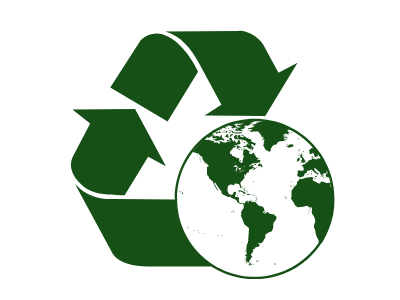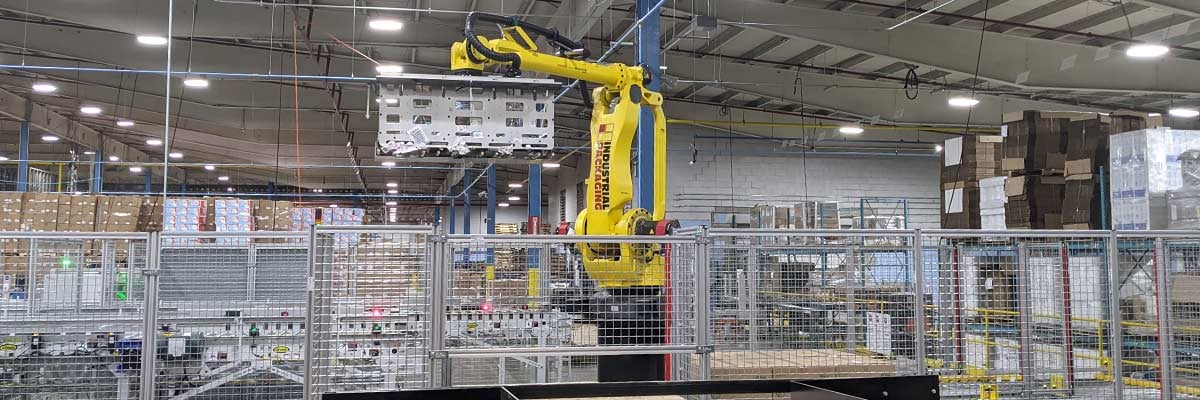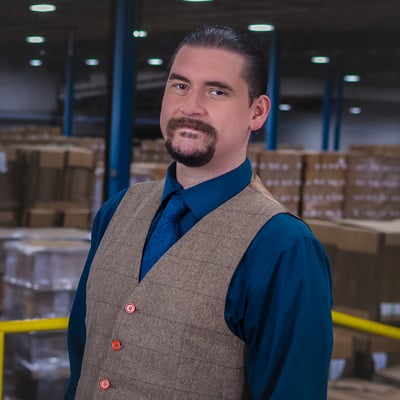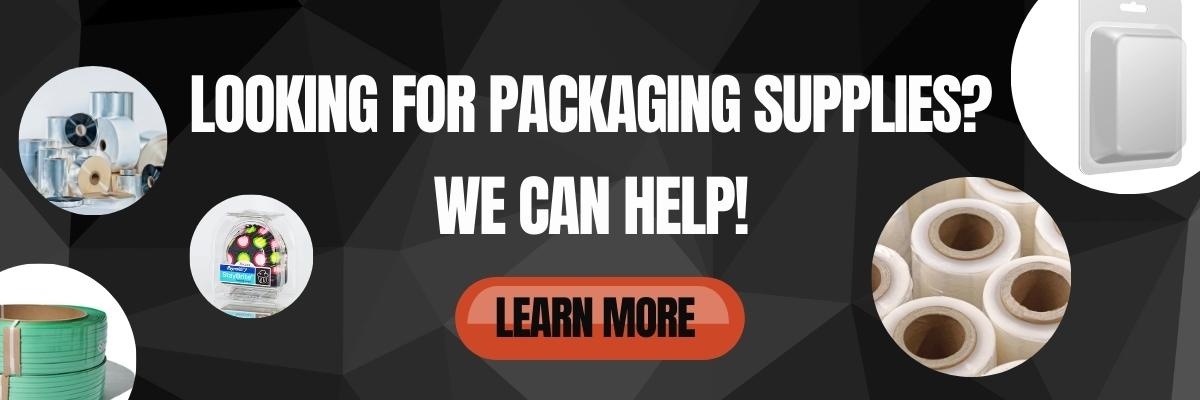The Top 5 Packaging Trends For 2023
Packaging Materials | Environment | Packaging Design | Packaging Psychology
I can't believe it's already October, yet here I am, jotting down the top 5 packaging trends for 2023! They say time goes faster as you get older, and I can't help but to say I agree.
Well, folks, 2022 has seen some exciting developments in the packaging industry. The hot packaging trends for 2023 are shaping up and feature some exciting topics.
While sustainability and automation are at the forefront of the evolution of the packaging industry as a whole, there are some new players in the game vying for your attention!
But what will be the hottest packaging trends in 2023? While only time will tell for sure, we have some significant predictions for what will be taking the spotlight as we head into the new year.
This article will review the top 5 packaging trends for 2023. After reading this article, you should have everything you need to capitalize on these hot topics for your business.
The Top 5 Packaging Trends For 2023
From custom fonts to minimalist packaging design, many steaming hot packaging trends are gearing up to take center stage in 2023.
And while there are many players in the game today, we will focus on what we are predicting to be the crème de la crème of these new packaging trends that are coming up in the new year.
In the section below, we will review the top 5 packaging trends for 2023 and provide some insight into what is driving these exciting new dynamics within the packaging industry.

1. Sustainable Packaging
Coming in at number one, it should be no surprise that the number one item on this list is sustainable packaging. Truly, the call for green packaging materials and protocols has become almost deafening!
And that is for a good reason. Over the past decade, consumers have demanded that their favorite brands "go green" with more earth-friendly packaging materials. And the call has only gotten louder year over year.
In the past five years or so, many corporations, to meet consumer demands, have joined the call for sustainable packaging, with many companies developing sustainability programs and protocols.
These programs often include a major commitment to lowering the business's overall carbon footprint and switching from traditional to sustainable packaging materials.
As sustainable packaging has become a veritable war cry from consumers around the globe, many businesses are rushing to get green as fast as possible.
Interestingly enough, and perhaps a somewhat predictable element of these war cries are those of consumers pushing to ban single-use plastics.
And while that makes sense in light of significant ecological problems such as the great pacific garbage patch, the public may be unwittingly running in the opposite direction of their goal.
With many companies committing to switch from plastics to paperboard, cardboard, and metal or glass containers, many consumers are cheering at the new manifestation of fully recyclable packaging materials that may soon be coddling their favorite products.
The only problem with this situation is that if these types of protocols are adopted in mass, the environment will take a further and more brutal beating.
While it may come as a surprise, switching to cardboard, paperboard, or metal and glass containers will significantly negatively affect the environment.
This is because while the materials mentioned above are 100% fully recyclable, they all have significantly higher carbon footprints.
By switching to these materials from soft plastics and other flexible packaging materials or rigid plastic packaging supplies, we will effectively be transitioning the pollution from our rivers and oceans, expanding said pollution significantly and moving it to our sky and air supplies!
Whether or not corporations and consumers alike will take the time to review the science and choose to do what is best for the environment versus doing what feels good remains to be seen.
In the meantime, there is plenty of information about what sustainable packaging really is and the future of sustainable packaging as it relates to scientific facts rather than feel-good metrics.
As we progress into the future, true sustainability for packaging rests with biopolymers, biodegradable packaging, PIR and PCR packaging materials, and other packaging materials designed to make the lowest carbon footprint possible.

2. Packaging Automation
The only hot-button topic I have heard more about from professionals within the industry and clients looking for new solutions is automation.
Many companies of various sizes are currently working to partially or fully automate their packaging lines and, sometimes, their entire warehouse.
With the looming reminder of what a pandemic can do to the supply chain, it is not a surprise that many businesses are looking to automation as a new weapon in the war against COVID and any potential pandemics in the future.
Many of the newest packaging machines hitting the market have fully automated models that can be programmed with built-in computers. And, while in many cases, you still need human operators to power, analyze and repair the equipment, new machines can do some of these tasks on their own.
With this push for extensive automation across various global industries, we are also seeing a steady rise in the interest and implementation of robots and Cobots.
Cobots (also known as collaborative robots) have slowly been rising in popularity as the demand for labor is ever increasing in the face of ongoing labor shortages.
We here at Industrial Packaging are committed to implementing and further evolving our own packaging automation efforts to ensure that we can meet client demands and changes within the market and global supply chain.
By partially or fully automating your packaging lines or warehouse, you will be prepared to tackle issues with COVID and other pandemics by reducing the number of people hence reducing the probability of spreading germs and viruses.
Coupled with a pandemic-prepared certification, you can practically pandemic-proof your packaging lines and warehouses for the future!
In a time where finding good labor is one of the significant challenges of the day, one question remains.
Where do you start if you are ready to partially or fully automate your packaging? What questions do you need to answer before proceeding with packaging automation?
In the podcast below, I answer these questions in a fascinating discussion with Greg Berguig, Vice President of Sales & Marketing at PAC Machinery.
3. Creative And Custom Typography For Product Packaging
One aesthetically pleasing trend that has been proving to be very effective in grabbing the attention and wallets of consumers is the implementation of creative and custom typography and fonts for your product's packaging.
It may be easy to think of your product packaging's text, typography, and fonts as an afterthought. However, this would be a significant mistake that could lose you customers.
In order to get consumers' attention today, you really have to know your audience and evoke positive emotions within them to gain their business.
And one of the best ways to do this is one of the hottest growing trends in packaging design today. And that trend is a hyper-focus on selecting the best fonts for your packaging based on what your customers expect from your brand.
Today, many top retail companies are studying their consumers and placing careful protocols in their packaging design to ensure that consumers and prospects resonate with the message sent by the packaging's font and typography selections.
One of the fastest growing trends in packaging design today is the use of custom fonts created specifically to resonate positively with your customers in a way that shows them you understand what they want and what they care about.
Your customers have many thoughts about your product and the expected quality, functionality, aesthetics, and related dynamics of your product.
To change your customers from everyday consumers into die-hard FANS of your products and brand, you must be able to communicate the messages they want to hear and feel through the fonts you select or create to provide the right message to your customers about how well you know them and their tastes.
Failure to do this and falling into the trap of ignoring or delegating your font choices to an afterthought will likely result in your customers going to competitors who understand that your packaging's typography must reflect the desires and expectations of the consumer.
4. Minimalist Packaging
Minimalist packaging is a trend that has remained consistent since last year; minimalist packaging continues to grow in popularity for a variety of reasons.
First and foremost, minimalism is an act of rebellion in a world that is oversaturated with colors, a sea of typography, and a seemingly endless variety of products.
This act allows these soft, sometimes seemingly bland packages to stand out from the crowd.
While that may seem counterintuitive, when you have a packaged product featuring only two colors, one font, and very little text, it is much easier to spot among the kaleidoscopic ocean of imagery, fonts, photography, graphics, and other intense visual dynamics.
But aesthetics and simplicity are not the only reasons many consumers fall in love with minimalist packaging. As many types of minimalist packages are made from a single packaging material or two packaging materials, they are generally much easier to recycle.
As a kind of antithesis to luxury packaging, minimalist packaging features not only minimal fonts and graphics but also minimal materials.
And many of the most common packaging materials used to create minimalist packaging are recyclable. In this respect, minimalist packaging catches consumers' attention because it is both easy to identify and understand and more environmentally friendly than some more flamboyant alternatives.
So, you can expect to see more minimalist packaging out in the wild as we grow closer to the holidays and, eventually, the new year.
5. Interactive Packaging Materials
Considering the forecasted expected growth of the interactive packaging market, it is easy to see why this type of packaging made the cut for this list.
Interactive packaging is a broad umbrella term, including items such as augmented reality and VR packaging, QR codes on packaging, some forms of modified atmosphere packaging, and any other types of packaging that features an interactive component that entices the consumer to interact with the packaged product.
Interactive packaging could be something as simple as a kid's cereal box featuring a game on the back and something as complex as robotic point-of-purchase displays.
Regardless of the simplicity or complexity of any given type of interactive packaging, one thing is for sure. People love interactive packaging, and the industry is only expected to grow significantly with each passing year.
Suppose you are looking for a way to engage your consumers and inspire curiosity and interaction. In that case, interactive packaging is something you may want to consider implementing in your product's packaging.
Where Can You Learn More About Packaging Trends?
After reading this article, you should have a decent grip on some of the biggest packaging trends coming to a store near you in 2023.
But, these are only a drop in the pond! There are tons of amazing and awe-inspiring forms of packaging and related topics to discover within the packaging industry.
But where can you find cutting-edge information, breaking news, and engaging editorials about all things packaging?
The answer to that question, my friends, is the Industrial Packaging Learning Center!
Whether you are looking for ways to gas flush pouches for modified atmosphere packaging or a simple comparison between roll bags and poly bags, our learning center has everything you could possibly want to know about packaging in one easy-to-navigate library!
And, if you cannot find the information about the packaging topics you are looking for, let us know! We will happily dive into new topics and produce exciting articles on the packaging topics you want to hear about!
About Nathan Dube
As the Digital Marketing Specialist at Industrial Packaging, I am honored to create content for such a phenomenal company and work with one of the greatest teams in the Packaging Industry. Whether creating a video, writing blog posts or generating other pieces of content and multimedia, I am always excited to help educate and inspire our prospects and clients to reach their highest potential in regards to their packaging processes and needs.



